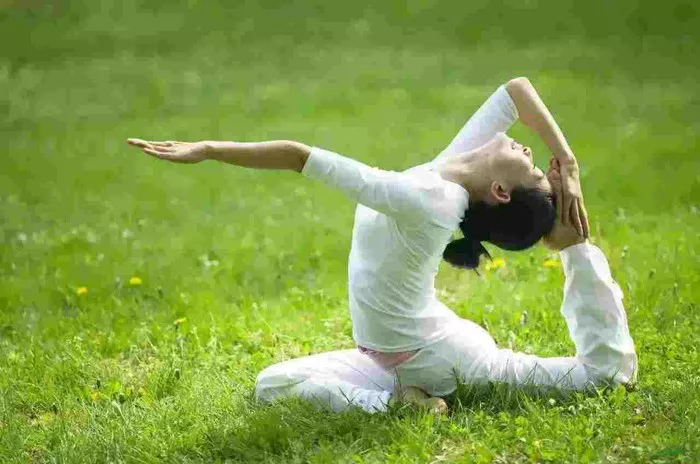Ashtanga Yoga, a venerated tradition rooted in ancient Indian wisdom, has captivated the modern world with its structured sequence of postures and emphasis on self-discipline. At its core, Ashtanga Yoga is guided by a set of principles that serve as the foundation for physical, mental, and spiritual growth. This article embarks on an in-depth exploration of these principles, shedding light on the essence of this profound practice.
The Dynamic Symphony of Breath: Ujjayi Pranayama
At the heart of Ashtanga Yoga lies the principle of Ujjayi Pranayama, the rhythmic and controlled breathing technique. Ujjayi breath, often described as “ocean breath,” is characterized by a soft, audible inhalation and exhalation through the nostrils, with the back of the throat slightly constricted. This deep, diaphragmatic breathing serves multiple purposes.
Firstly, it oxygenates the body, increasing blood flow and enhancing energy levels. As practitioners inhale deeply, oxygen is delivered to the muscles, organs, and tissues, promoting optimal functioning. Secondly, Ujjayi breath acts as a focal point, anchoring the mind in the present moment. The sound and sensation of the breath create a meditative quality, helping to quiet the mental chatter and cultivate a state of inner calm. Moreover, the synchronized movement of the body with the breath, known as vinyasa, creates a dynamic flow that generates heat within the body. This internal heat aids in detoxification, purifying the body and preparing it for deeper stretches and postures.
The Precision of Movement: Vinyasa Flow
Vinyasa, the principle of synchronized movement with breath, is another fundamental aspect of Ashtanga Yoga. In Ashtanga, each posture is linked to the next through a series of flowing movements, typically involving the transition from a standing posture to Chaturanga Dandasana (four-limbed staff pose), Upward-Facing Dog (Urdhva Mukha Svanasana), and Downward-Facing Dog (Adho Mukha Svanasana). This vinyasa flow not only builds strength and flexibility but also creates a sense of rhythm and continuity in the practice.
The vinyasa sequence serves as a moving meditation, requiring practitioners to be fully present and focused on the movement of the body with each breath. It challenges the body to move with precision and control, engaging the muscles and joints in a coordinated manner. The repetition of the vinyasa flow in each posture helps to develop muscle memory, making the movements more fluid and efficient over time. Additionally, the vinyasa flow generates heat, which warms up the muscles and connective tissues, allowing for deeper stretches and greater range of motion.
The Path of Self-Discipline: Tapas
Tapas, often translated as “austerity” or “burning enthusiasm,” is a principle that emphasizes the importance of self-discipline and dedication in the practice of Ashtanga Yoga. Tapas is not about self-denial or punishment but rather about cultivating the inner fire and determination to stay committed to the practice, even when faced with challenges or distractions.
In the context of Ashtanga Yoga, tapas manifests in various ways. It could be the commitment to a regular practice schedule, showing up on the mat day after day, regardless of one’s mood or energy levels. It could also involve pushing through physical discomfort during challenging postures, without forcing or straining the body. Tapas requires practitioners to be honest with themselves, acknowledging their limitations while also striving for growth and improvement. By cultivating tapas, practitioners develop the mental strength and resilience needed to overcome obstacles, both on and off the yoga mat.
The Inner Landscape: Svadhyaya
Svadhyaya, which means “self-study,” is a principle that encourages practitioners to turn their attention inward and explore the depths of their being. In Ashtanga Yoga, svadhyaya is not limited to the physical practice but extends to the study of the self at all levels—physical, mental, and emotional.
During the asana practice, svadhyaya involves observing the body’s sensations, emotions, and thoughts without judgment. Practitioners learn to notice how their body responds to different postures, identifying areas of strength and weakness, tension and relaxation. This self-awareness allows for a more personalized and effective practice, as practitioners can adjust their approach based on their individual needs and limitations. Beyond the physical practice, svadhyaya also encompasses the study of yoga philosophy, scriptures, and teachings. By delving into the wisdom of the ancient sages, practitioners gain a deeper understanding of the principles and purpose of yoga, which in turn informs and enriches their practice.
The Ethical Foundation: Yamas and Niyamas
The yamas and niyamas, the ethical guidelines of yoga, form the moral and ethical foundation of Ashtanga Yoga. The yamas are external observances that govern our behavior towards others, while the niyamas are internal observances that guide our relationship with ourselves.
The five yamas are Ahimsa (non-violence), Satya (truthfulness), Asteya (non-stealing), Brahmacharya (moderation), and Aparigraha (non-greed). Practicing ahimsa in Ashtanga Yoga means approaching the practice with kindness and compassion, both towards oneself and others. It involves respecting the body’s limits and avoiding any actions that cause harm or injury. Satya encourages practitioners to be honest with themselves and others, both on and off the mat. Asteya extends beyond the literal act of stealing to include the avoidance of taking what does not belong to us, whether it be physical possessions, ideas, or energy. Brahmacharya promotes moderation in all aspects of life, including diet, sleep, and sexual activity. Aparigraha teaches us to let go of attachments and desires, freeing ourselves from the cycle of craving and aversion.
The five niyamas are Saucha (purity), Santosha (contentment), Tapas (austerity), Svadhyaya (self-study), and Ishvara Pranidhana (surrender to a higher power). Saucha involves maintaining physical, mental, and emotional cleanliness. In the context of Ashtanga Yoga, this could mean keeping the practice space clean, eating a healthy and balanced diet, and purifying the mind through meditation. Santosha encourages us to find contentment in the present moment, accepting ourselves and our circumstances as they are. Ishvara Pranidhana is the practice of surrendering to a higher power, whether it be a personal deity, the universe, or the collective consciousness. By surrendering our ego and will, we open ourselves up to the wisdom and guidance of a higher force, allowing for greater growth and transformation.
The Gateway to Stillness: Drishti
Drishti, which means “gaze,” is a principle that focuses the mind and enhances concentration during the practice of Ashtanga Yoga. In Ashtanga, each posture is associated with a specific drishti point, a fixed focal point that the practitioner’s gaze is directed towards. These drishti points are strategically placed to help maintain balance, alignment, and focus.
By fixing the gaze on a particular point, the mind becomes more centered and focused, reducing distractions and wandering thoughts. The drishti serves as an anchor, drawing the practitioner’s attention inward and cultivating a state of one-pointedness. This focused gaze also helps to improve balance and stability in the postures, as the mind and body work together in harmony. Moreover, the practice of drishti encourages mindfulness and awareness, as practitioners learn to observe their thoughts, emotions, and sensations without getting caught up in them.
Conclusion
The principles of Ashtanga Yoga are a comprehensive guide to physical, mental, and spiritual well-being. From the rhythmic breath of Ujjayi Pranayama to the ethical foundation of the yamas and niyamas, each principle plays a crucial role in shaping the practice and the practitioner. By incorporating these principles into our daily lives, we can cultivate a deeper connection with ourselves, others, and the world around us. Ashtanga Yoga is not just a physical exercise but a path of self-discovery and transformation, and its principles offer a roadmap for navigating this journey with grace, wisdom, and integrity.























